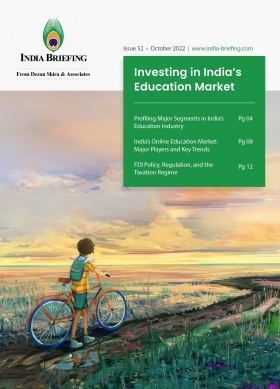India’s Economy at a Glance: Trends and Outlook for 2023
The Indian economy has remained resilient and is on track to grow by seven percent in the FY 2023 despite the ongoing global headwinds caused by external factors like post-pandemic spillovers, supply chain disruptions due to the ongoing Russia-Ukraine conflict, and potential recessionary pressures facing developed economies. This resilience can be attributed to large domestic markets, coupled with consistent efforts on the part of the government to strengthen the supply side through reforms like PLI schemes, national logistic reforms, fostering ease of doing business through digitization, etc. This article outlines measures aiding India’s business climate and highlights the main macroeconomic trends and prospects surrounding the Indian economy in 2023.
India defied global trends in 2022 to witness record M&A activity and remains among the fastest growing economies in the world. Despite economic headwinds due to geopolitical factors and a global consumption slowdown, the World Bank revised its 2022-23 GDP forecast for India upwards to 6.9 percent from 6.5 percent (in October 2022).
In 2022, India boasted of over 100 start-up unicorns and the third largest start-up ecosystem in the world. The government powered through trade negotiations with leading markets to conclude FTAs with the UAE and Australia. Infrastructure spending too has been robust – with connectivity projects sanctioned and sped up. Meanwhile, beneficiaries were finalized for several production-linked incentives (PLI) schemes announced over the last two years to enhance domestic manufacturing capacity. Business reforms – via reducing procedural complexities and digital governance – have been pushed alongside policies to attract greater foreign investment in major states.
Going into 2023, India wants its presidency of the G20 to coincide with achieving inclusive development, higher economic growth, accelerating exports for core industries, moving up the global value chain, and expanding green sectors to meet climate action targets.
Indian economy at a glance
According to estimates from the International Monetary Fund (IMF), India’s economy surpassed that of the United Kingdom in terms of size in 2022 and rose to become the fifth largest in the world with a 7.2 percent growth forecast for FY 2023.
Despite global headwinds, India is well positioned to register impressive growth, backed by robust demand from its large domestic markets. A recent World Bank report titled “Navigating the Storm” underlines that Indian economy has proved remarkably resilient to the ongoing impacts of the deteriorating external environment, growing faster than most major emerging market economies (EMEs).
With the banking system in good health to support the nation’s economic recovery, it is anticipated that private sector investment will rise in the forthcoming year, making India the bright spot in the Asian business and investment landscape.
With 57.8 points on the S&P Global-compiled manufacturing purchasing managers’ index (PMI), India’s manufacturing sector entered 2023 on a high note. India witnessed this expansion in production as business conditions improved at the fastest rate in over two years while growth in new orders and output accelerated.
Factors facilitating ease of doing business in India
At the heart of ease of doing business reforms in India has been an extensive focus on rationalization and digitalization of regulatory compliances, encompassing the entire business cycle from start to exit. Rationalisation of regulatory compliances received the topmost priority in India. In 2022, the government has worked to simplify, rationalize and digitize 33,000 compliances across federal ministries, departments and States.
Trade facilitation has also seen a flurry of reforms recently, where India’s global ranking jumped up from 146th position in 2018 to 68th position in 2020. Initiatives such as the shift towards paperless compliance system, greater clearances through Risk Management System, etc. have helped lower dwell-time and transaction costs for exporters and importers.
Rigorous reform measures introduced as part of Business Reform Action Plan (BRAP) since 2014—entailing their annual assessment and rankings—have also contributed to sustained improvement in the business environment at a pan-India level.
About Us
India Briefing is produced by Dezan Shira & Associates. The firm assists foreign investors throughout Asia from offices across the world, including in Delhi and Mumbai. Readers may write to india@dezshira.com for more support on doing business in in India.
We also maintain offices or have alliance partners assisting foreign investors in Indonesia, Singapore, Vietnam, Philippines, Malaysia, Thailand, Italy, Germany, and the United States, in addition to practices in Bangladesh and Russia.
- Previous Article New Shipping Board in India to Fix Tariff at Major Ports, Adjudicate PPP Disputes
- Next Article Tamil Nadu’s Industrial Parks and SEZs under SIPCOT: A Brief for Investors











